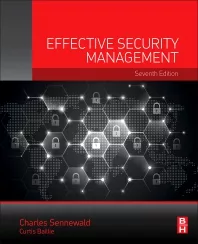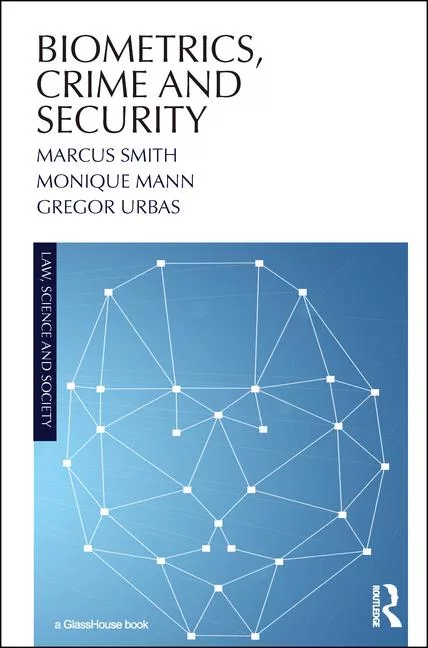Embracing New Alert Technology for More Effective Response
How to embrace alert and notification technology in the age of risk and response.


From active shooters on campus, to major safety accidents, and even traffic and weather alerts, notifications have come to alert masses in only seconds.
Cleveland Ohio’s E Prep and Village Prep School has a system that notifies a parent when a student is absent.
But when 14-year-old Alianna DeFreeze boarded a public bus in late January of 2017, the alert system failed to notify her parents. She was found dead four days later.
Such tragic incidents raise concern about the reliability and efficacy of emergency alert notification systems. Such systems are useful and essential for facilities and locations that need to automatically notify anyone about anything important. However, the technology is still maturing and its integration with emergency plans and policies continues to develop.
The Air Force is using such systems to alert Air Force personnel who carry a firearm to arrive armed at their duty station on base. The California Department of Corrections is using an alert system to notify victims of crimes that the offender incarcerated for crimes against them is being released. And Carroll University in Waukesha, Wisconsin, was able to put its campus on lockdown instantly when campus police received a call that a suspicious person was spotted trolling with a firearm. Mass notification and alert technology is becoming part of the infrastructure of many facilities of all types; its reliability and effectiveness are paramount concerns as this technology develops and becomes widely adopted.
Staying Tuned
It’s important to stay tuned to the capabilities of mass notification and alert technology. You must know how the technology is advancing, what’s new and available, and how such technology can make things go right in notifying persons in a crisis or a routine process.
Overall, a key point to understand about mass notification technology is that basic alerting is not enough, says Guy Miasnik, President, AtHoc, a Division of BlackBerry. Sending a text message to everyone in a single all employee database only can do so much for an organization. He notes that as we are living in the age of the Enterprise of Things (EoT) that connects and shares information across devices, teams and organizations, a more robust communication solution is required that can securely collect information from many sources and then pass it along efficiently to specific users, improving safety for people and operations and even pass it along to other organizations.
Often the first step in embracing the whole enterprise is to conduct a risk assessment of your facility. According to Imad Mouline of Everbridge, Inc., there is a paradigm shift in the way that the security industry views and approaches mass notification technology. Traditionally, mass notification solutions were designed to support infrequent one-way, “blast” messages. These systems relied on reaching employees and stakeholders based solely on their static home and office locations, and rarely had the capabilities required to quickly and contextually reach anyone on any device, anywhere, at any time.
But as global threats have increased in complexity and unpredictability – from sophisticated cyber incidents to all-to-frequent incidents involving workplace violence and active shooters – enterprise security leaders should, if they haven’t already, embrace new targeted and contextually relevant critical communication solutions.
Realigning Technology
Mass notification and alert solutions have grown in parallel to other technologies. First we became wired; next we become more wireless; now we all carry smartphones – information is literally at our fingertips anyplace, anywhere.
Tragedies, crises and other emergencies, though unfortunate, demonstrate and suggest the high value of alert notification technology. From active shooters on campus, to major safety accidents, and even traffic and weather alerts, notifications have come to alert masses in only seconds.
Technology that makes this all happen in seconds will continue to advance in the years ahead.
And the severity and frequency of critical events and their implications for personal safety or business performance are driving demand for more effective notification solutions. Data from Frost & Sullivan predicts that critical communications software represented a $15.6 billion worldwide market opportunity in 2015.
This potential may derive from the fact that many enterprises still have not notification system or technology at all. Everbridge’s own research (in conjunction with their partner BCI) found that more than 60 percent of businesses are not prepared for location-specific events, such as workplace violence or terrorism; and 65 percent felt that simply locating people who may be in an impacted building was their biggest challenge in a workplace violence or terrorism situation. The report also showed that 29 percent of businesses don’t have emergency crisis communication training and education programs.
Clearly, there is some planning, preparation and training that needs to be done, and organizations should begin by establishing the right incident response policies and workflows, and then deploying the right infrastructure and technology, to gain accountability for their workforce, responders and key stakeholders at all times, says Mouline. This is a great opportunity for a security professional to demonstrate leadership and own this function.
Begin by integrating your critical communication system with your physical access control and network access solutions to ensure a more accurate visualization of their employee locations within a facility. Even better, you can integrate the same system with travel management programs and itineraries to account for global travelers. In the future, by taking these steps, security professionals can make the name “mass notification” virtually immaterial by ensuring that all of their critical communications are anything but “mass,” and instead, are targeted and location-aware.
Being Proactive with Alert Notification Systems
Imad Mouline of Everbridge, Inc. urges planning, preparation and training in order for notification strategies and systems to be most effective.
In its research (in partnership with the Business Continuity Institute), The Emergency Communications Report 2016, Everbridge discovered that the majority of organizations have an emergency communication plan, and use it across departments. However, employees are less likely to be confined to a single physical location – and critical event management plans need to reflect this growing reality. This is in spite of organizations using multiple communication channels to improve the reliability of getting information to employees.
Here are the highlights of their findings:
-
84 percent of organizations report having an emergency communications plan.
-
Plans are used across departments and the most common triggers for emergency communications are unplanned IT and telecommunication outages (42 percent), power outages (40 percent), adverse weather (39 percent), facilities management incidents (23 percent), cybersecurity incidents (22 percent) and natural disasters (22 percent).
-
One out of three organizations (32 percent) have more than 100 employees who travel internationally.
-
32 percent of organizations have staff traveling in “high risk” areas of the world.
-
More than 60 percent of businesses are not prepared for location-specific events, such as workplace violence or terrorism.
-
30 percent of respondents have no communications plan in place to communicate with employees during workplace violence or terrorism.
-
56 percent lack confidence in their preparation for workplace violence or terrorist incidents, and only 6 percent are “very much prepared.”
-
65 percent felt that simply locating people who may be in an impacted building was their biggest challenge in a workplace violence or terrorism situation; 76 percent indicated that the ability to communicate with those people and confirm their safety was a major concern.
-
29 percent do not have emergency/crisis communications training and education programs.
-
26 percent of organizations said it takes more than 30 minutes to activate their emergency communications plan; 12 percent take an hour or more. Only 24 percent activate their plan in less than five minutes.
-
Of the 16 percent of organizations that do not have an emergency communications plan, 64 percent said they would only consider putting a plan in place after a business-affecting event.
-
More than half of organizations (55 percent) use three or more methods to communicate with employees during an incident. Email and text messaging are the two most common modes; 56 percent said they still use manual call trees.
Looking for a reprint of this article?
From high-res PDFs to custom plaques, order your copy today!







